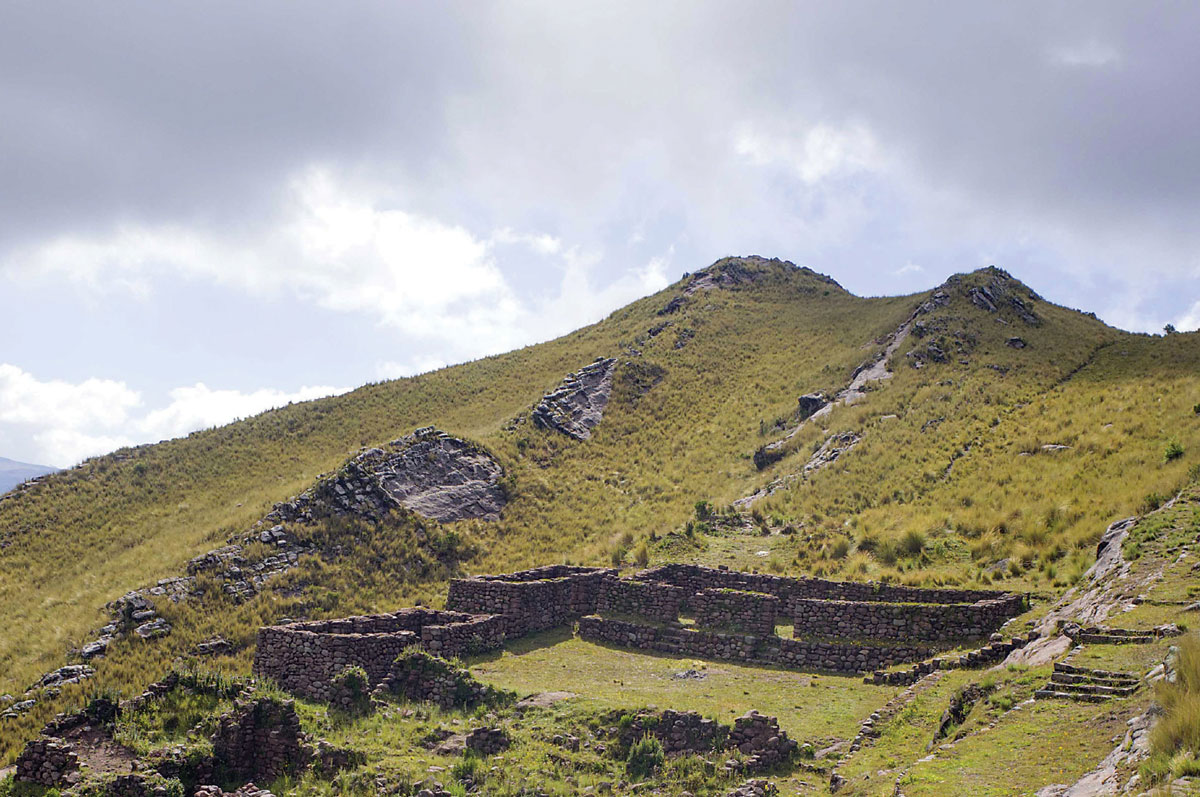The Lens of Time
Temporality and experience in Inca Cuzco
Adam Herring

The founders of the Inca dynasty, so their descendants recalled, were birthed from a cave in the high Andes. They were a group of eight siblings—four male-female couples. Emerging into daylight, the founders wandered Peru’s southern highlands. In time and after many episodes of conflict, the siblings came to stand on a tall mountain along the southern rim of the Cuzco basin—Mount Huanacauri. It was here that the first Inca were given to behold a series of divine apparitions, not least the wide valley-prospect itself, framed beneath a rainbow across the sky. This narrative of coming-into-vision—from the darkness of the cave to the rainbow’s colors—traced the Inca founders’ rise to power. They moved into the valley, and there they set to the principal duties of Inca lordship: a domestic life of social obligation and maize cultivation.
In later centuries, the Inca leadership did not recall the year of their dynasty’s foundation, nor how long the first siblings had wandered the highlands before they settled in Cuzco. Nor to our knowledge did the mature Inca state mark the date of its foundation on an annual calendar. In Mexico, the Aztec of Tenochtitlan marked the events of their dynastic history with great temporal exactitude; they recalled that a world-creation before their own came to an end on a specific day with a catastrophic flood, and the day that a world-creation before that was extinguished with a rain of fire. They commemorated the dates of two even earlier apocalypses (of hurricane winds and ravenous jaguars, respectively). And they prophesied the date of their own world’s destruction, by earthquake. Among the Maya dynasties of southern Mesoamerica’s lowlands, the present era was understood to come to full completion on the day-count of 13.0.0.0.0—21 December 2012 in the Gregorian calendar. Scholars today do not know what event was prophesied for that completion date; a seventh-century AD hieroglyphic inscription recovered from Mexico’s Tabasco State records that a supernatural entity named B’olon Yookte’, “9-Root,” would “descend” (yeem-) on that day—though the text is fragmentary and poorly understood. The Maya lords of Calakmul’s Snake Dynasty employed an eccentric, nonstandard calendrical system to record the reigns of their most ancient kings. Across Mexico’s highlands and the Isthmus of Tehuantepec, nobles of many ethnicities took their birthdate as their proper name: that day-position in the Mesoamerican 260-day divinatory calendar foretold the story of their lives. The same divinatory calendar remains in use among Maya healers in highland Guatemala today. The very word Maya likely derives from a Yukatek Mayan expression that can be translated as “keepers of calendric prophecy” or “those bound by time’s fate.” By contrast, South America’s Inca, the rulers of the largest empire in the pre-contact Americas, kept no count of days to reckon their history, nor did they parse each year into strictly observed calendrical cycles.